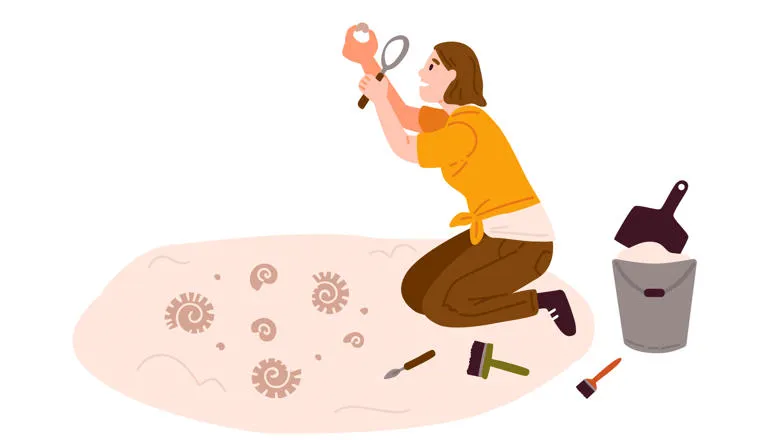08 March 2021
A profile on the often overlooked Geologist Charlotte Murchison for International Women's Day 2021
Dr Adelene Buckland, Senior Lecturer in Nineteenth-Century Literature, discusses the significant role British geologist Charlotte Murchison played in nineteenth-century scientific discoveries, reminding us that women have long played a central (if less acknowledged) role in scientific work.

Kate Winslet’s latest turn in critically-acclaimed drama Ammonite tells the story of perhaps the most well-known of female geologists, Mary Anning, who famously discovered the first ichthyosaurus specimen in 1812, the first complete plesiosaurus in 1823, and the first British example of a pterodactyl in 1828. But the film also draws attention to Charlotte Murchison (played by Saoirse Ronan) – a woman whose scientific work will be much less familiar to most cinema-goers.
Daughter of a botanist mother and an Army General father, seven years into her marriage Charlotte organised a geological apprenticeship for her reckless, foxhunting husband Roderick along the south coast of England. Here, setting the pattern of a lifetime, Roderick thundered his horse across large swathes of terrain, learning the broad structures of the landscape, while Charlotte stopped at key sites along the way to make connections with local naturalists (including Anning and her geologically-minded friends the Philpot sisters), and collecting the fossil specimens that would ultimately identify the layers and histories of the earth.
After the tour on the south coast, Roderick debuted at the Geological Society with a paper on the geology of Sussex, Hampshire and Surrey, which gave the most detailed geological account of the greensands on the south of England yet written. Its achievement rested on Charlotte’s specimens – she had discovered a new species, the avicula, and her fossils helped divide the greensands into three new and distinct geological periods. But even more importantly, a detailed list of Charlotte’s important fossil collection – partly drawn from this tour – soon after appeared in the geologist William Fitton’s ground breaking Strata Below the Chalk. There it formed a central plank of emerging evidence that the Wealden rocks of Kent were – despite being sandwiched between two marine formations – filled with freshwater fossils. Much to the astonishment of many geologists, the evidence suggested that the earth, in a single region, had transformed itself from sea, to river or lake, to sea again – and that it had happened gradually enough that many of its species had survived these great changes.
Using Charlotte’s fossil collection, Fitton and others were able to begin to argue that the earth had not once been visited by biblical-style deluges or apocalyptic transformations – but was a theatre of constant and gradual geological transformation. And in 1828, Charlotte and Roderick travelled to Central France on a geological tour with Charles Lyell, where Lyell and Charlotte collaborated on a paper that would prove that the valleys of the Auvergne had been excavated by the gradual action of rivers, over the course of millennia, and had not been created in a single catastrophic incident like the biblical Noah’s Flood (Roderick lay sick while they produced it). While Lyell wrote the words, Charlotte had collected many of the specimens and drew the classic illustration that proved the point beyond all doubt.
Together, Charlotte and Lyell helped nineteenth-century geologists – already convinced that the earth was millions of years old – to really imagine just how geological time might actually operate.
Ultimately, Lyell’s debt to Charlotte’s work would mean that she left him with little choice but to admit her (and by extension, many other scientifically-inclined women, including Mary Somerville) to his lectures at King’s College London in 1831. (King’s banned them again the following year, and Lyell resigned.) The next year, Charlotte forced the issue once more at the Oxford meeting of the British Association for the Advancement of Science, hosted in part by her geologist friends William and Mary Buckland (herself a geological illustrator, collector, archivist and researcher). Later, she ran one of the most important scientific salons in London. So, while Anning’s story will always have enduring appeal, Charlotte nonetheless reminds us that there was an entire network of geological wives, daughters and female assistants whose work was understood in its own time – but published under the names of their male relatives and associates and not recorded for posterity. Far from being great exceptions to the rule, women have long played a central (if less acknowledged) role in scientific work.

